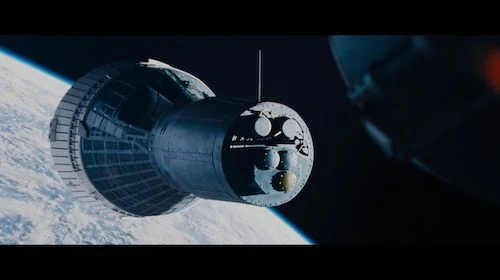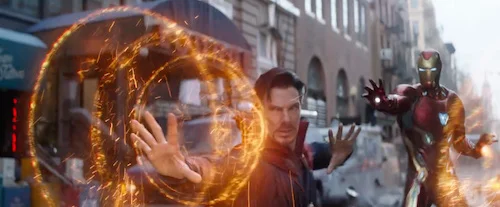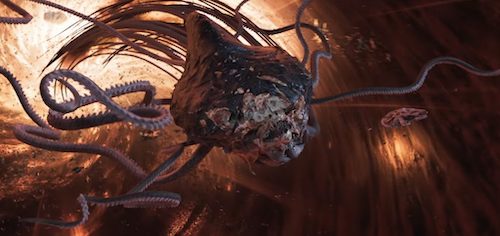Academy Awards Project: Best Visual Effects
It is 2019. We have reached a distance far enough from the dawning of computer generated imagery. Practical effects were at their zenith, but this whole CGI thing was worth checking out. We had some hiccups (okay, many hiccups) along the way, but we also had Jurassic Park, so there’s that. Thanks to Jurassic Park, and the occasional other film (the Lord of the Rings trilogy comes to mind, too), we could tell that CGI was at least great for the present. Looking back on these particular films, we can honestly see how ahead of their time they were. For other films, maybe not. However, we are decades after the start of using computer rendering to make special effects, and 2019 is looking quite good. I can’t predict the future and how great these examples will look in due time, but right now, if I am honest, these are some stellar candidates. The Academy usually doesn’t botch this category (unlike other categories that are more susceptible to favouritism and promotional politics). However, these were easy enough to rank. Here are the nominees for Best Visual Effects, in order from worst to best.
Biggest Snub: Annihilation
Okay, I know my many mentions of Annihilation being forgotten about are unrealistic; these mentions are simply because I find the film to be a modern science fiction masterpiece. However, the omission of Annihilation in this category is almost insane. The entire world within the Shimmer? All of the warped animals and natural patterns? Then there is that ending, which is flat out what your brain melting might feel like. Yeah. There is no reason why Annihilation being omitted here makes sense. At least the five nominees are good, I guess?
5. Christopher Robin-Christopher Lawrence, Michael Eames, Theo Jones and Chris Corbould
I hate, hate, hate putting this film last. Look at the image of Tigger above! These plush animals came to life, and they absolutely looked like stuffed toys (outside of Rabbit and Owl, who of course were made to look more like real animals). The aging on these toys is so real. The way they talk and interact with the world actually makes sense, too. When Robin carries his teddy friends around, they act just like toys being moved when it comes to their weight, movement, and reaction. This is only so low because the other nominees did things on a greater scale. Otherwise, Christopher Robin is great in this department.
4. First Man-Paul Lambert, Ian Hunter, Tristan Myles and J.D. Schwalm
Like Christopher Robin, this film is only so low because the three above it utilized CGI even more (and in even crazier ways). Otherwise, the mixture of practical effects and visual effects in First Man is nearly seamless. This is thanks to both the production design and this department here. The detailing on the space shuttles is very precise, and every object moves as they should (whether they are weightless due to gravity, or breaking through the Earth’s barrier). No complaints here.
3. Avengers: Infinity War-Dan Deleeuw, Kelly Port, Russell Earl and Dan Sudick
Marvel was smart to push for Infinity War to get this nomination over Black Panther (which is a much better film, but a weaker example in this category). First things first, we have to take into account that all of the various effects in the many Marvel films leading up to this film had to be considered. They all blend well, here. In fact, you don’t ever get confused by the effects; somehow, everything is laid out pretty well. Also, where do we even start with Thanos? The motion capture effects on Josh Brolin work so well. His size seems realistically relative. His detailing is lifelike. This is a strong candidate for sure (and even a possible winner).
2. Solo: A Star Wars Story-Rob Bredow, Patrick Tubach, Neal Scanlan and Dominic Tuohy
This is easily the weakest film in this category, but boy, does Solo excel with its sole nomination. For a good chunk of the film, I had to give kudos for not knowing which parts were practical and which were generated (not only a common confusion in the Star Wars canon, but also a testament to this film’s worthiness in this category). Then the film went crazier with Han Solo and company’s interstellar adventuring (see the above image). I’m sorry. This is a substandard film, but its effects were breath taking. It absolutely deserves to be here (and only here).
1. Ready Player One-Roger Guyett, Grady Cofer, Matthew E. Butler and David Shirk
And then there is this film. Where the hell do you even start? Again, I am not ranking the films here, but the effects. As a story, Ready Player One was a major let down. However, I watched the film for this project, and it didn’t matter. I knew I was going to only watch this film once, and I did so primarily for the effects. Firstly, there are countless pop culture references, and all of them had to be made to fit their old universes while making sense in this one. Somehow, each and every reference checked out (whether they were real, CGI, cartoon, or video game based). Secondly, almost every single scene takes place in an imaginary, generated reality. Things shatter. Weather is generated. Every character is a made up avatar. Every single thing is dazzling to look at and experience, even if nothing is happening. Then the wars happen. I can’t even go into detail with those, because there simply is too much to discuss. Ready Player One wins the best visual effects of the year, without question.
Our Predicted Winner: It currently looks like The Avengers: Infinity War has the strongest shot, but Ready Player One may be able to sneak past. Those look like your strongest candidates currently.
Our Academy Awards Project is an ongoing series that will continue until all the categories have been ranked and reviewed. Tune in Monday to Saturday for a new category each day.
Andreas Babiolakis has a Masters degree in Film and Photography Preservation and Collections management from Ryerson University, as well as a Bachelors degree in Cinema Studies from York University. His favourite times of year are the Criterion Collection flash sales and the annual Toronto International Film Festival.








